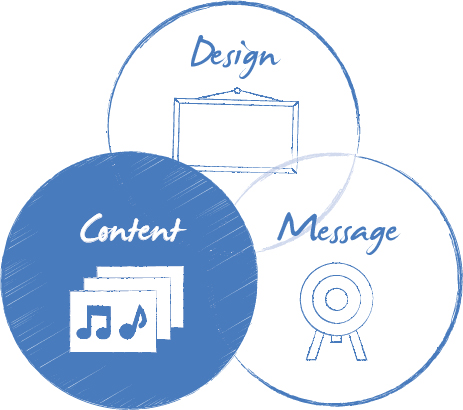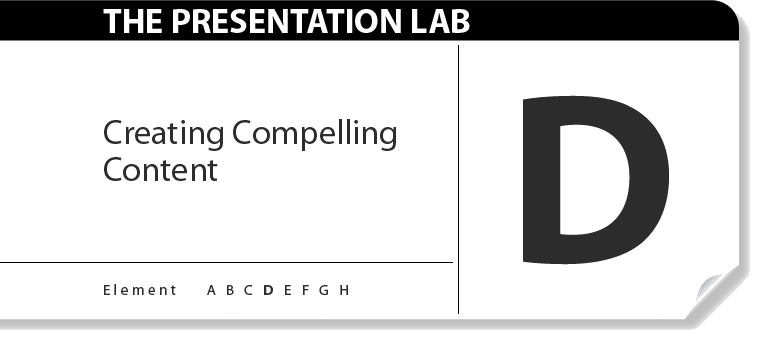
It might seem like a simple question, but it’s very easy to get the wrong end of the stick. Content to many people is the information you place onto a PowerPoint slide (normally in bullet point form!) to get your message across.
But it actually goes deeper than that.
This means that, dependent on your audience, there are likely to be large chunks of content cluttering up your slide that the audience either doesn’t need to know—or, more likely, is already completely au fait with and doesn’t need you to remind them of.
It’s useful to see content as the logical building blocks of your presentation. If you don’t share salient content in a structured way, you’ll never get to your goal of a completely understood, engaging and remembered message. As such, it’s also a great way of building empathy and rapport with your audience by ensuring that the content you use addresses their questions, concerns and needs. Content that engages them and takes them on a personal journey is a lot more valuable and compelling than sharing fact after fact about your business and how impressive it’s growth ...
Get The Presentation Lab: Learn the Formula Behind Powerful Presentations now with the O’Reilly learning platform.
O’Reilly members experience books, live events, courses curated by job role, and more from O’Reilly and nearly 200 top publishers.



